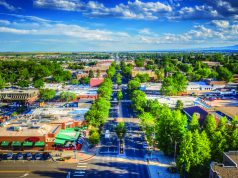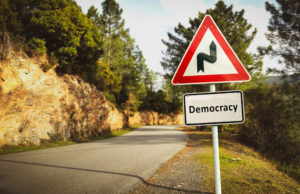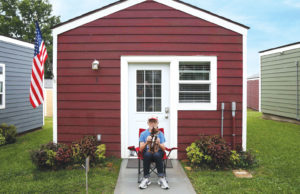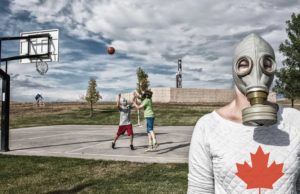Eating in the cafeteria? The disposable forks are
biodegradable, made from corn. Leftovers? There’s composting, both
off-site and on. Trouble getting home? Try car-pooling, van-sharing or
something called maxi pool.
Seattle U. is typical of many universities across
the country that are trying to win the hearts and minds — and tuition
checks — of students by becoming greener than their peers.
Perhaps nowhere is the trend more apparent than in the
The move toward greener campuses is driven as much
by the concerns of a new generation of students as it is by university
leaders. And it reaches beyond the cafes and dorms into the lecture
halls. At the
Local universities have been quick to crow about their green successes. Just consider some recent news releases: “
Beyond the hype, the universities are laying down serious plans for reducing carbon emissions. The
in particular, has been lauded by a number of national organizations
for its sustainability efforts and the extensive detail contained in
its 73-page Climate Action Plan.
In the plan, the school sets ambitious targets: a 15
percent reduction in greenhouse-gas emission over the next decade, and
the elimination of all net emissions by 2050.
The university says it expects technological
improvements to account for some 60 percent of its energy-reduction
goals. Suggested improvements range from the mundane, such as reducing
steam leakage from the pipes in its heating plant, to the fanciful,
such as pumping cold water from the depths of
The school hopes behavioral changes, prompted by
education and financial incentives, will account for another 20 percent
of its goals. Carbon offsets — planting trees, for example — would take
care of the remainder.
While some initiatives like the Climate Action Plan are coming from administrators, others are bubbling up from students like
computer-science junior is one of 20 students who sometimes stand next
to trash bins in the dining halls to remind staff and students that
almost all their leftovers are compostable and should be placed in the
green-waste bins.
“We don’t mean to be chastising students at all, and
we try to be as friendly as we can,” says Yousoufian, the
associate-director of Students Expressing Environmental Dedication
(SEED). “We understand it’s confusing, and we are here to help, not to
make people feel stupid.”
Yousoufian says students are generally supportive,
although there have been some awkward moments. To avoid those in the
future, she says, SEED members plan to start wearing T-shirts or pins,
and perhaps playing music, to make their mission clearer.
“The UW is a pretty sustainable campus,” she says. “I think students come in and have the culture of green thrown at them.”
composting for the campus’s Housing and Food Services, says his goal is
to enable the 30,000 daily customers to simply dump everything in a
compost bin after eating a meal by making every cup, plate, knife and
fork compostable.
That should become reality by mid-March, he says, by
which time compostable lids for coffee cups and soup bowls will have
been introduced.
“If you go back about three years, we had the classic waste model. Everything on the customer side was garbage,” he said.
Back then, the university sent 120 tons of green
waste annually to Cedar Grove Composting, according to Meyering. That’s
now grown to 540 tons per year.
Seattle U. has gone one step further by composting some of its food scraps on campus.
Seattle U.’s recycling coordinator, says he composts about 1 cubic yard
of kitchen leftovers each week, which becomes mulch for the campus
flower beds. Sometimes, he says, a tomato or squash plant will grow
from the mulch, a reminder of how it was created.
Seattle U. has a long-standing commitment to such
practices. It stopped using pesticides back when Ciscoe Morris, now a
gardening celebrity, was the campus groundskeeper some 30 years ago.
Students at a number of other local campuses have
taken to growing their own food in small garden plots. Evergreen even
boasts its own organic farm, which serves as an outdoor classroom. And
students at both Western and Evergreen have voted in favor of paying a
fee to ensure their power comes from green sources such as wind and
solar.
New buildings on most campuses — including a new business school at the
At Seattle U., staff recently celebrated the opening
of the new Admissions and Alumni building, which features
floor-to-ceiling windows and a roof that collects and filters
rainwater. Designed as a gathering spot for students and the community,
the building is expected to get a prestigious gold rating through the
Leadership in Energy and Environmental Design (LEED) rating system.
Some students seem apathetic about the greening of
their campuses, but if there’s any push back — a feeling that it’s
overkill or too entwined with a particular political viewpoint — it’s
not immediately apparent. Most seem to embrace the idea of creating a
cleaner, greener place to study.
The fact that publications like The
which aims to help students choose a college, have recently added
“green” ratings to their college guides indicates that students are
increasingly weighing environmental policies when deciding what
university to attend.
“There’s a lot of student activism on campus, and
students are used to people talking to them about social or
environmental issues,” says
Seattle U. senior involved in environmental advocacy. “I hope that when
they leave, students will take away some knowledge about their local
environment and think more about the decisions they make every day.”
—
(c) 2010, The Seattle Times.
Visit The Seattle Times Extra on the World Wide Web at http://www.seattletimes.com/
Distributed by McClatchy-Tribune Information Services.














